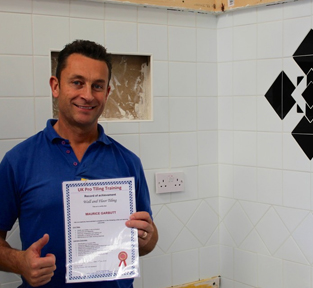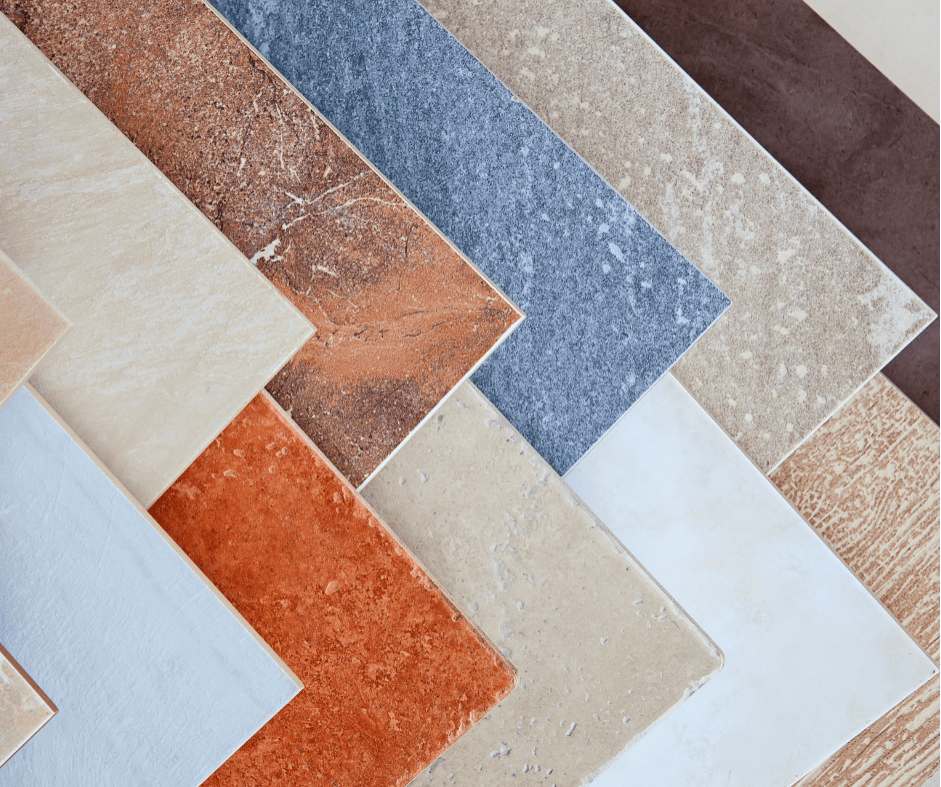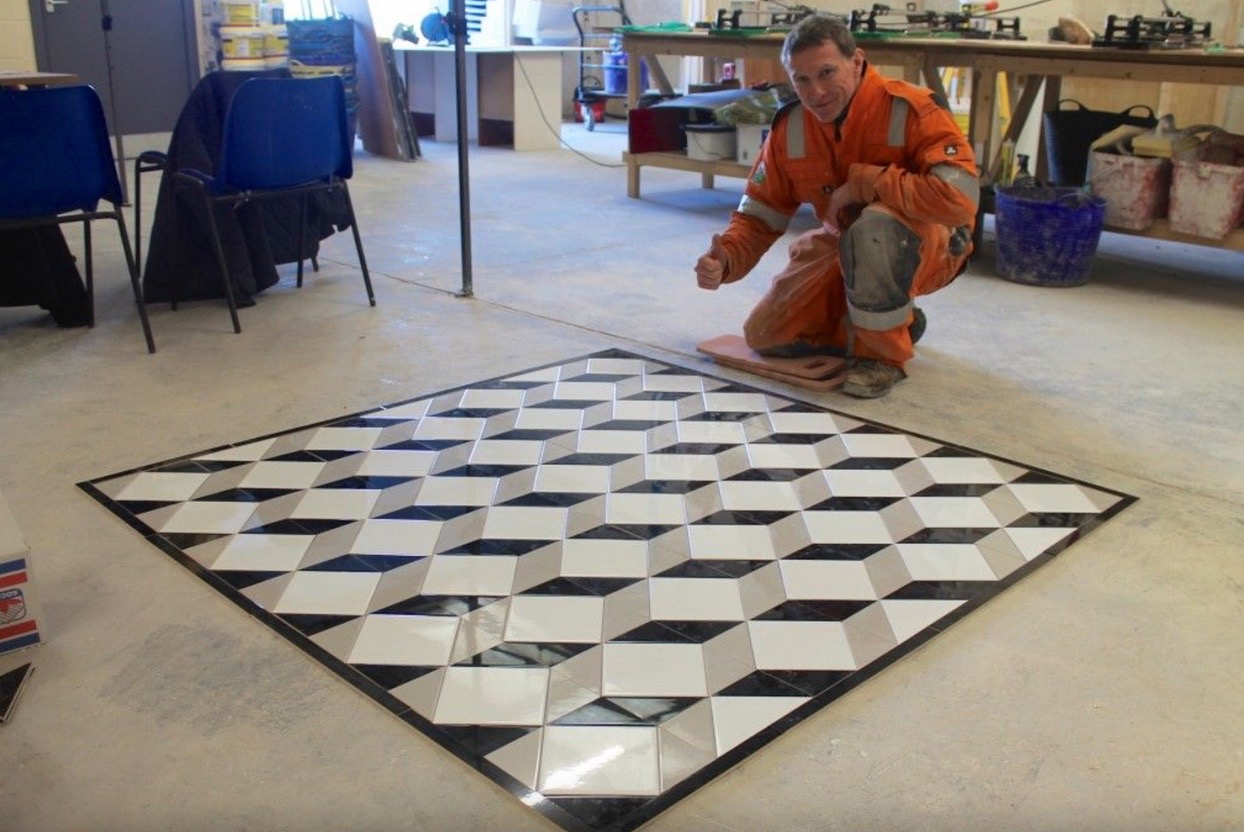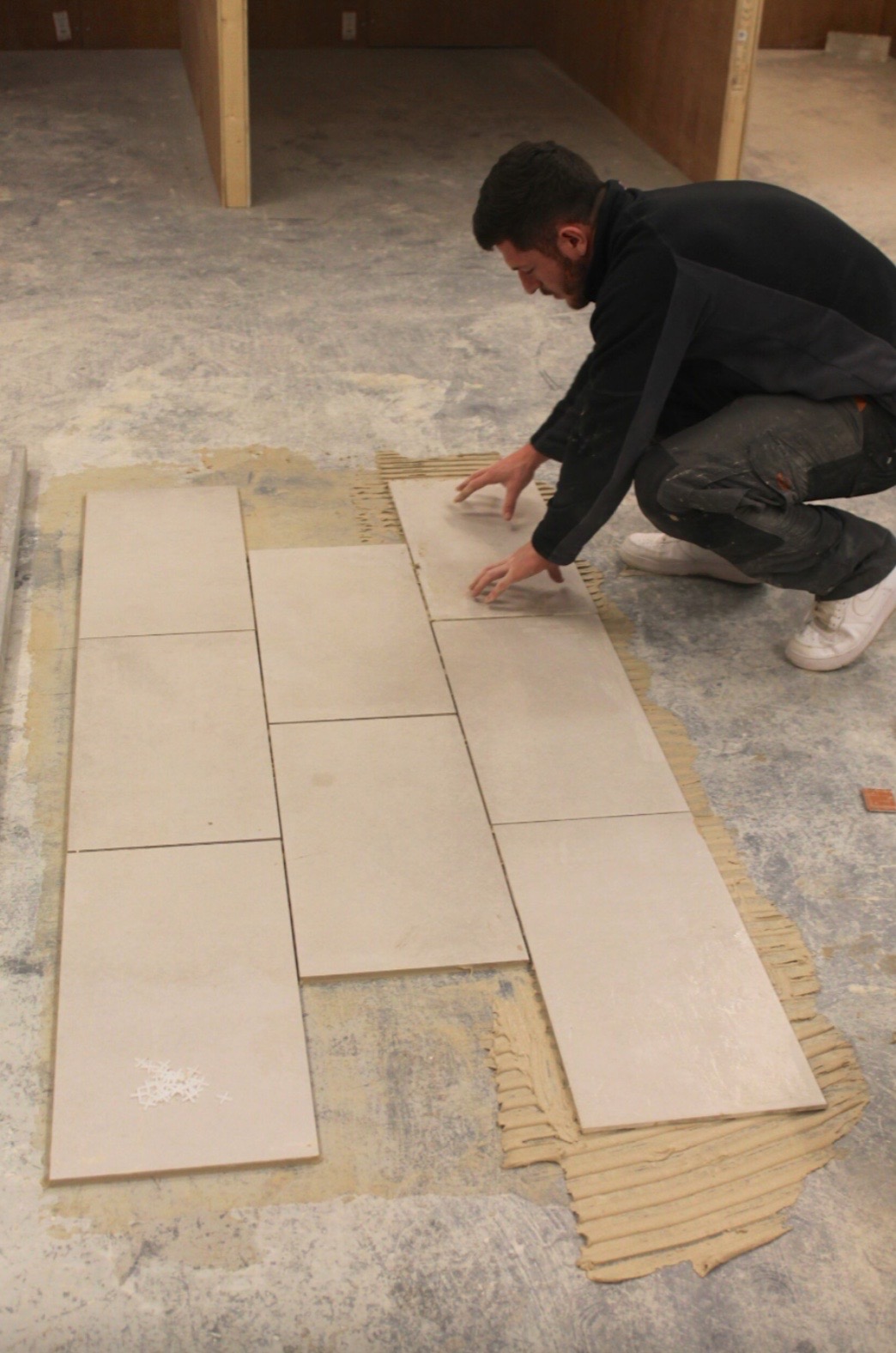A Comparison of Ceramic, Porcelain, and Natural Stone Tile Materials

Choosing the right type of tiles is a crucial decision when embarking on a home improvement project. The market offers an array of options, but three materials stand out: ceramic, porcelain, and natural stone. In this comprehensive guide, we’ll navigate through the characteristics, pros, and cons of each type of tile. Join us on this journey as we explore the world of tiles and delve into the intricacies of how to tile effectively for various spaces in your home.
Understanding the Types of Tiles
Ceramic Tiles
Ceramic tiles are made from natural clay, sand, and water. These popular tiles are kiln-fired, resulting in a hard, durable surface. They come in various sizes, colours, and patterns, making them suitable for a range of applications.
Pros of Ceramic Tiles
- Affordability: Ceramic tiles are budget-friendly, making them an excellent choice for those looking for cost-effective options.
- Versatility: Available in a wide range of styles, colours, and sizes, ceramic tiles offer flexibility in design.
- Easy Maintenance: These tiles are resistant to stains and moisture, making them easy to clean and maintain.
Cons of Ceramic Tiles
- Durability: While durable, ceramic tiles may be more prone to chipping or cracking compared to porcelain or natural stone.
- Limited Application: Not as dense as porcelain, ceramic tiles are better suited for indoor use and may not be ideal for high-traffic areas.
Porcelain Tiles
Porcelain tiles are a type of ceramic tile with added features that enhance their durability and resistance. Made from finer clays and fired at higher temperatures, porcelain tiles are denser and more impervious to water.
Pros of Porcelain Tiles
- Durability: Porcelain tiles are highly durable and resistant to wear, making them suitable for both indoor and outdoor applications.
- Water Resistance: The low water absorption rate of porcelain tiles makes them ideal for bathrooms, kitchens, and other areas prone to moisture.
- Versatility: Like ceramic tiles, porcelain tiles come in various styles, colors, and sizes, offering design flexibility.
Cons of Porcelain Tiles
- Cost: Porcelain tiles are generally more expensive than ceramic tiles, which can be a consideration for budget-conscious homeowners.
- Installation Challenges: The density of porcelain tiles can make them more challenging to cut during installation, requiring professional expertise.
Natural Stone Tiles
Natural stone tiles, including options like marble, granite, limestone, and travertine, bring a touch of elegance and uniqueness to any space. Extracted from quarries, these tiles showcase the natural beauty of the stone.
Pros of Natural Stone Tiles
- Aesthetic Appeal: Each natural stone tile is unique, providing a one-of-a-kind, natural look to your space.
- Durability: Many natural stones, such as granite and slate, are incredibly durable and can withstand heavy use.
- Timeless Elegance: The timeless beauty of natural stone adds a touch of sophistication and luxury to any room.
Cons of Natural Stone Tiles
- Cost: Natural stone tiles tend to be more expensive than ceramic or porcelain options, making them a higher-end choice.
- Maintenance: Some natural stones may require regular sealing to prevent stains, and they can be more susceptible to scratching and etching.
How to Tile Effectively
Now that we’ve explored the characteristics of different types of tiles, let’s delve into the process of how to tile effectively. Whether you’re an experienced DIY enthusiast or contemplating the assistance of professionals, the subsequent guidelines will lead you through a successful tile installation.
- Surface Preparation
- Ensure the surface is thoroughly cleaned, dry, and devoid of any debris.
- Repair any cracks or uneven areas in the substrate to create a smooth and stable base.
- Gather Your Tools and Materials
- Invest in quality tools, including tile spacers, a tile cutter, trowel, and a level.
- Choose the appropriate adhesive and grout for the type of tile you’re using.
- Measure and Plan
- Measure the space accurately to determine the layout and avoid awkward tile cuts.
- Plan the tile placement, starting from the center of the room for a balanced look.
- Cutting Tiles
- Use a tile cutter to come up with precise cuts.
- Measure twice and cut once to prevent errors.
- Applying Adhesive
- Apply adhesive evenly using the appropriate trowel size for your tile.
- To avoid the adhesive drying before placing the tiles, it’s advisable to work in smaller sections.
- Laying Tiles
- Press each tile firmly into the adhesive, using tile spacers to maintain even gaps.
- Check regularly with a level to ensure the tiles are aligned correctly.
- Grouting
- Allow the adhesive to set before grouting.
- Mix and apply the grout, working it into the spaces between tiles.
- Before the grout dries, use a damp sponge to remove any excess.
- Sealing (for Natural Stone)
- If using natural stone tiles, follow the recommended sealing process to protect the surface.
- Cleaning and Maintenance
- Once the tiles and grout have dried, clean the surface thoroughly.
- Follow recommended maintenance practices for the specific type of tile used.
Navigating the world of different tile materials, including ceramic, porcelain, and natural stone, allows homeowners to make informed decisions based on their preferences, budget, and intended application. Understanding the pros and cons of each type of tile empowers you to choose the right material for your specific needs.
Additionally, mastering the art of how to tile effectively ensures a successful installation that not only enhances the aesthetic appeal of your space but also provides durable and long-lasting results. Whether you opt for the versatility of ceramic, the durability of porcelain, or the timeless elegance of natural stone, the key lies in thoughtful planning, precise execution, and proper maintenance to enjoy the beauty of your tiled spaces for years to come.



